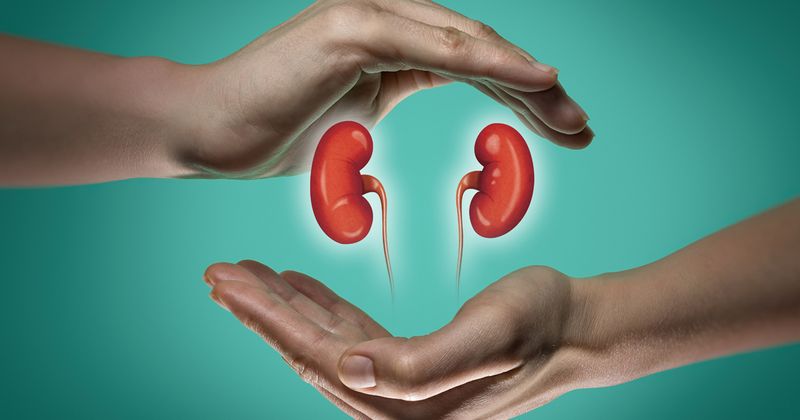Avacopan reduces glucocorticoid use, recovers renal function in ANCA-associated vasculitis
Treatment with avacopan can reduce glucocorticoid use, improve disease control, and recover renal function among patients with ANCA-associated vasculitis, according to a speaker at ACR Convergence.

“ANCA-associated vasculitis is associated with increased early mortality and a high risk of end-stage renal disease,” Peter A. Merkel, MD, MPH, chief of rheumatology and a professor of medicine and epidemiology at the University of Pennsylvania, told attendees at the virtual meeting. “The standard of care includes high-dose glucocorticoids with either cyclophosphamide or rituximab. Glucocorticoids are the major cause of treatment-related harm, especially with infection growing in the course of the disease.”

“In pre-clinical data, C5a drives neutrophil activation in AAV via the C5a receptor, he added. “In an AAV animal model, C5a knock-out or antagonism stops the development of vasculitis. Avacopan is a highly selective oral inhibitor of the C5a receptor. Two phase 2 trials in the treatment of AAV — the CLEAR and CLASSIC trials — demonstrated that avacopan has the potential to replace glucocorticoids, improve control of renal vasculitis and reduce glucocorticoid toxicity, without additive toxicity.”
To analyze the efficacy and safety of avacopan (CCX168, ChemoCentryx) among patients with ANCA-associated vasculitis who are also receiving cyclophosphamide, azathioprine or rituximab (Rituxan, Genentech), as well as examine changes in renal function, Merkel and colleagues conducted the phase 3 ADVOCATE trial. In this randomized, double-blind, active-controlled study, 330 participants were assigned to receive either standard prednisone therapy or 30 mg of avacopan twice daily. Participants in both treatment groups received either cyclophosphamide followed by azathioprine, or rituximab.
Among the participants, 164 were assigned to the prednisone group, while 166 received avacopan. The primary efficacy endpoints were the proportion of participants who achieved remission at week 26, as well as sustained remission at week 52, measured by the Birmingham Vasculitis Activity Score (BVAS). The researchers assessed renal function based on the estimated glomerular filtration rate (eGFR), and examined albuminuria based on the albumin-to-creatinine ratio.
According to the researchers, week 26 remission was achieved in 72.3% of the avacopan group, compared with 70.1% in the prednisone group (P < .0001). Sustained remission at week 52 was later achieved among 65.7% of those in the avacopan group, compared with 54.9% of those treated with prednisone (P = .0066). In addition, time to relapse from time of remission was longer among those treated with avacopan (P = .0091). The hazard ratio for time to relapse among the avacopan group, compared with prednisone, was 0.46, (95% CI, 0.25-0.84).
The researchers observed efficacy across newly diagnosed compared with relapsed disease, as well as PR3- compared with MPO-ANCA, granulomatosis with polyangiitis compared with microscopic polyangiitis, cyclophosphamide compared with rituximab, and men compared with women.
Among participants with baseline renal disease, those treated with avacopan demonstrated a greater increase in eGFR, compared with the prednisone group (P = .029), with the greatest difference reported in those with a baseline eGFR of less than 30 mL/min/1.73 m2. In addition, the avacopan group experienced a more rapid reduction in albuminuria, contrasted with no change in the prednisone group at 4 weeks. Later, the overall reduction at week 52 was similar between the groups.
Regarding safety, the avacopan group had 116 serious adverse events, including 25 serious infections, compared with 166 serious events, including 31 serious infections, in the prednisone group. White blood cell count decreases occurred in 4.9% of patients in the prednisone group, compared with 2.5% in the avacopan group, with liver function test increases observed in 3.7% and 5.4% of participants, respectively.
“In the treatment of AAV, C5a-receptor inhibition with avacopan reduces glucocorticoid use and toxicity by eliminating the need for daily glucocorticoid therapy, and improves disease control and recovery of renal function,” Merkel said. “Avacopan may fulfill an unmet need to reduce or avoid glucocorticoids while yielding better long-term outcomes for patients.”








